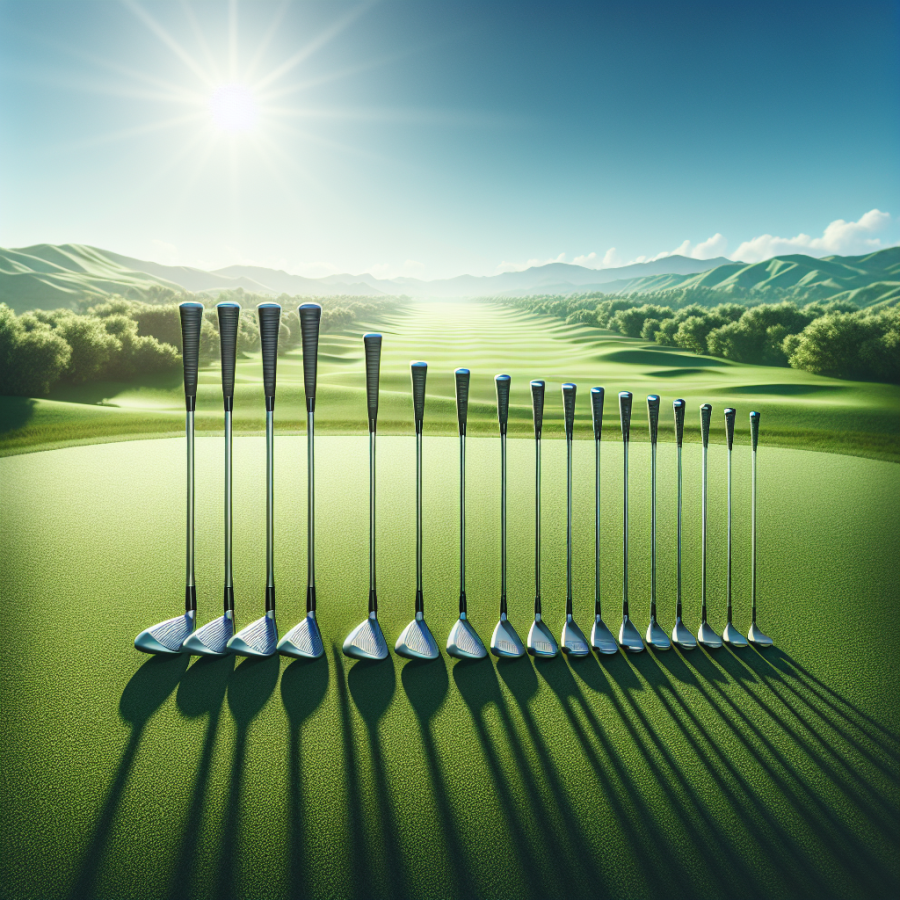Choosing Your Powerhouse: How to Identify The Farthest-Hitting Golf Club
Finding the right golf club that hits the farthest is a task that every golfer, new or experienced, is faced with. When your goal is to enhance your swing distance, you need to keep various factors in mind in order to optimize your club choice. Here's how to do it.
First, one should focus on the driver. Generally, the driver is the club that is going to hit the farthest in most golfer's bags. The critical specifications of a driver that affect its maximum distance are its loft, length, and swing weight. A driver’s loft helps decide the launch angle of the golf ball, which directly influences the trajectory and distance. The length of a driver helps dictate a golfer’s swing arc and is crucial for proper contact. Swing weight, on the other hand, plays a key role in influencing the club’s balance, the golfer's swing speed, and thereby, the overall length a golf ball can travel.
Your swing speed also has a direct impact on the distance you can hit the golf ball. A golfer with a faster swing speed generally needs less loft. Fast swingers might want to consider a driver with a loft of 9.5 or fewer degrees. For average players with moderate swing speeds, a loft of about 10.5 degrees is ideal, while players with slower swing speeds should consider a loft of around 12 degrees or more.
However, the loft is not the only thing to consider. The length of the club also factors in heavily. A longer club will create a larger arc and theoretically boost swing speed, thus achieving greater distance. Standard drivers come at lengths between 43 and 45 inches. However, some drivers are slightly longer, closer to 46 or 47 inches. It may seem beneficial to gravitate towards longer clubs, but remember that the longer the club, the harder it is to control.
Another important aspect to consider is the golf ball itself. Different models of golf balls behave differently upon impact. High-performance golf balls typically have a three-piece or four-piece construction and are designed to optimize distance and control. These also factor into your swing and how well you are maximizing the use of your chosen golf clubs.
And then there's the hotly debated topic of clubface technology. Many golf clubs now feature innovative design elements to increase what’s known as the coefficient of restitution (COR), or the “trampoline” effect a clubface has when it makes contact with the ball.
Read also:
Riding the Waves: The Thrilling Adventure of Surfing"
Understanding Golf Clubs: Features that Influence Distance
Understanding the technical aspects of golf clubs is the first step towards the journey of maximizing your swing. When it comes to understanding features that influence distance, there are several components to consider.
Firstly, the material of the club head is an enormous deciding component of how far your golf ball can travel. The club's head can be made from various materials, such as steel, titanium, or composite materials. Steel is durable and cost-efficient but doesn't offer significant distance; conversely, titanium is lightweight and allows for a larger clubhead, promoting longer distances. Composite materials typically offer a middle-ground, clearly depicting the material's impact on the distance coverage.
The second factor is the club's loft. The loft of a golf club is the angle at which the club face lies relative to the shaft. A club with a higher loft will send the ball at a steeper trajectory, resulting in lesser distance but more height. Conversely, a club with a lower loft, like a driver, will send the ball at a lower trajectory but cover a longer distance. It means that mastering the correct loft angle for each shot is crucial to attain maximum distance.
The club's design also plays a crucial role. A club with a cavity-back design is more forgiving and might help beginners cover more distance due to better weight distribution. On the other hand, blade-style clubs (typically used by professionals) offer less forgiveness but more control over the shot, which can result in higher distance coverage when used correctly.
The length of the shaft can significantly impact the distance you achieve with a golf club. A longer shaft allows for a wider arc and increased clubhead speed, which can improve distance. But it also reduces control, so finding the optimum balance is paramount. The flex of the shaft also comes into play: a stiffer shaft tends to promote distance but requires a higher swing speed, hence more suited to professional and advanced golfers.
Lastly, the type of club matters. Different types of clubs are designed to go different distances. Drivers are used for the maximum distance, usually in the first shot of the hole from the teeing ground. Fairway woods, hybrids, irons, and wedges follow subsequently, with each club hitting the ball a shorter and shorter distance.
Proper understanding and application of these features would help you identify the golf club that hits the farthest for you. Don't forget that individual skills, proficiency, and bodily strength also come into play in this regard.




